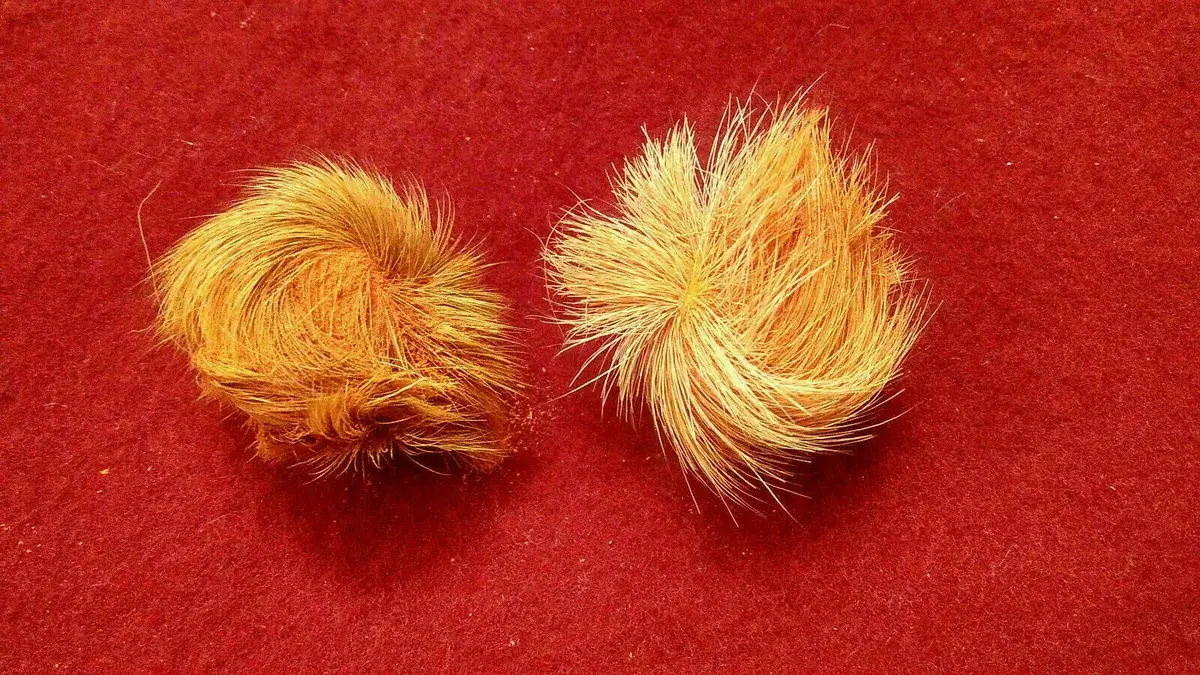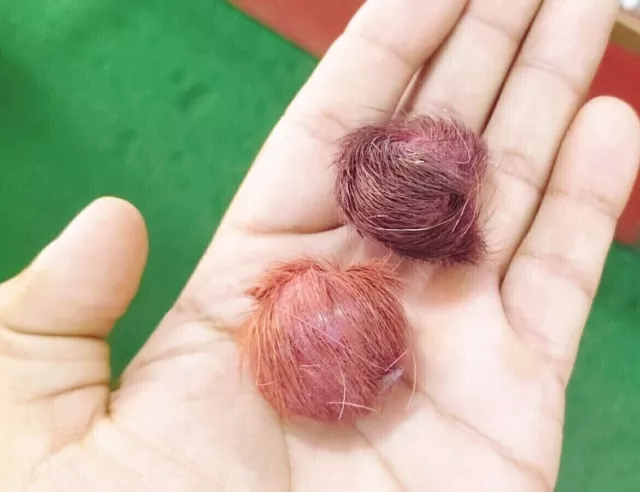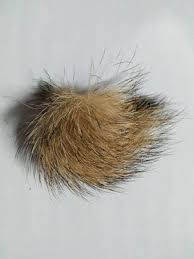Wavs
Siyar-singhi-gidar-singhi

“Siyar singhi” and “Gidar singhi” are terms from Indian folklore and belief systems related to superstitions and mysticism. They both refer to purportedly magical or mystical objects.
-
Siyar Singhi: This term typically refers to the “jackal’s horn” or “jackal’s tooth.” It is believed to be a rare and magical item in Indian mythology and superstition. It is said to bring luck, wealth, and protection to the possessor.
-
Gidar Singhi: This term refers to “hyena’s horn” or “hyena’s tooth.” Similar to siyar singhi, gidar singhi is also believed to possess magical properties and is considered highly auspicious in certain Indian cultural contexts.
Both siyar singhi and gidar singhi are often associated with rituals, talismans, and superstitions related to luck, prosperity, and protection from negative energies. It’s important to note that these beliefs are rooted in traditional folklore and are not scientifically validated.

The importance of siyar singhi and gidar singhi lies primarily within the cultural and spiritual beliefs of certain communities in India. Here are some key aspects of their importance:
-
Superstition and Belief: In Indian culture, siyar singhi and gidar singhi are believed to possess supernatural powers and are often sought after for their ability to bring luck, wealth, and protection. People who believe in these objects may use them in rituals or keep them as talismans for good fortune.
-
Cultural Significance: These items are deeply embedded in Indian folklore and traditional beliefs. They are part of a broader tapestry of mystical and magical elements that play a role in folk religion and superstition across the country.
-
Symbolism of Nature: The association with animals like jackals and hyenas adds to their mystique. Animals in many cultures are believed to possess qualities or energies that can be harnessed for human benefit, making these objects symbols of the natural world’s power.
-
Market and Trade: Despite their mystical nature, siyar singhi and gidar singhi are also part of a market where people buy and sell such items. This trade reflects both the demand driven by belief and cultural practices, as well as economic factors.
-
Ethical Considerations: The trade and belief in these items also raise ethical considerations, particularly concerning wildlife conservation. While there are legal protections for many animals, the belief in siyar singhi and gidar singhi can sometimes fuel illegal hunting and trade of animals, which threatens their populations.
Overall, the importance of siyar singhi and gidar singhi is deeply intertwined with cultural heritage, spiritual beliefs, and traditional practices in certain communities in India. Understanding their significance requires acknowledging both their cultural context and the broader implications for wildlife conservation and ethical considerations.

In the mystical tapestry of Indian folklore and superstition, siyar singhi and gidar singhi emerge as enigmatic objects believed to possess supernatural powers. These terms, deeply rooted in cultural beliefs and traditional practices, evoke a sense of mystery and intrigue among those who adhere to their significance.
Siyar singhi, often referred to as the “jackal’s horn” or “jackal’s tooth,” occupies a prominent place in Indian folk tales and spiritual lore. It is believed to be a rare and magical item, capable of bestowing immense luck, prosperity, and protection upon its possessor. The very essence of siyar singhi is intertwined with the mystical qualities attributed to the jackal, a creature revered in some cultures for its cunning and survival instincts. According to tradition, obtaining a siyar singhi is considered highly auspicious, and it is often sought after by individuals seeking to enhance their fortunes or shield themselves from malevolent forces.
Similarly, gidar singhi, known as the “hyena’s horn” or “hyena’s tooth,” shares a parallel mystique in Indian superstition. Like its counterpart, gidar singhi is believed to possess mystical properties that can bring wealth, success, and protection from harm. The association with the hyena, known for its nocturnal prowess and scavenging abilities, adds to the allure of gidar singhi as a talisman imbued with natural energies and spiritual blessings.
Significance of siyar singhi and gidar singhi : extends beyond mere superstition; it is deeply embedded in the cultural fabric of India. These mystical objects are not only symbols of luck and prosperity but also reflect the reverence and awe with which certain animals are regarded in traditional belief systems. The belief in siyar singhi and gidar singhi underscores a profound connection between humanity and the natural world, where animals are seen as conduits of divine or supernatural power.
In practical terms, the quest for siyar singhi and gidar singhi has spawned a niche market catering to those who adhere to these beliefs. Seekers may journey to remote regions, consult with spiritual guides, or engage in rituals to procure these elusive items. The trade in siyar singhi and gidar singhi, however, also raises ethical considerations, particularly concerning wildlife conservation. The animals associated with these objects, jackals and hyenas, are protected species in many parts of the world. The demand for their body parts—whether genuine or counterfeit—can fuel illegal hunting and trafficking, posing a threat to their populations and ecosystems.
Despite the ethical concerns, the allure of siyar singhi and gidar singhi persists, driven by centuries-old traditions and the enduring belief in their mystical properties. For believers, possessing a genuine siyar singhi or gidar singhi represents not only a tangible connection to ancient wisdom but also a source of spiritual reassurance and empowerment. The cultural significance of these objects transcends their material form, resonating deeply with individuals who seek guidance, protection, and prosperity in their lives.

Benefits of siyar singhi and gidar singhi:
Here are some of the perceived benefits:
-
Luck and Prosperity: Believers attribute siyar singhi and gidar singhi with the ability to bring luck and prosperity into one’s life. Possessing these items is thought to attract wealth, success in endeavors, and overall good fortune.
-
Protection: One of the primary benefits associated with siyar singhi and gidar singhi is protection from negative energies, evil spirits, and harm. It is believed that these objects can act as powerful talismans, shielding their owners from adversity and dangers.
-
Enhanced Spiritual Connection: For some individuals, owning siyar singhi or gidar singhi is a way to enhance their spiritual connection. They may use these items in rituals, prayers, or meditation practices to deepen their spiritual awareness and seek guidance from higher powers.
-
Health and Well-being: In certain traditions, these mystical objects are also believed to have healing properties. They may be used in folk remedies or spiritual ceremonies aimed at promoting physical health and emotional well-being.
-
Status and Prestige: Owning a genuine siyar singhi or gidar singhi can also confer status and prestige within certain communities. It may be seen as a mark of spiritual wisdom, resourcefulness, or divine favor.
-
Cultural Heritage: Beyond personal benefits, siyar singhi and gidar singhi hold cultural significance as symbols of traditional knowledge and folklore. They contribute to the preservation of cultural heritage and serve as reminders of ancient beliefs and practices.
-
Psychological Comfort: Believers often derive psychological comfort from owning siyar singhi or gidar singhi, viewing them as sources of reassurance and empowerment in challenging times.
It’s important to note that these benefits are based on cultural beliefs and traditional practices rather than empirical evidence. The efficacy of siyar singhi and gidar singhi in delivering these benefits is subjective and varies widely among individuals and communities.
How to use :
-
Placement and Display: Many believers place siyar singhi or gidar singhi in prominent locations within their homes or workplaces. They are often displayed in areas believed to attract positive energy or ward off negativity, such as near entrances or in places of worship.
-
Rituals and Offerings: Ritualistic practices may involve offering prayers or performing specific rituals with siyar singhi or gidar singhi. This can include lighting incense, chanting mantras, or offering flowers and other symbolic items to invoke blessings or protection.
-
Talisman and Amulet: These objects are often carried or worn as talismans or amulets. Believers may keep them close to their person, such as wearing them in a pouch around the neck or carrying them in a pocket, to benefit from their protective and luck-enhancing qualities throughout the day.
-
Meditation and Spiritual Practices: Some individuals incorporate siyar singhi or gidar singhi into meditation practices or spiritual ceremonies. They may hold the object during meditation sessions to deepen their spiritual connection or focus their intentions on specific goals.
-
Gifts and Exchanges: In certain cultural contexts, siyar singhi or gidar singhi may be exchanged as gifts among family members or given to friends as tokens of goodwill. This reinforces their role as symbols of luck, prosperity, and protection within social relationships.
-
Consultation with Spiritual Guides: Seekers may consult with spiritual guides, astrologers, or practitioners of traditional medicine who specialize in the use of siyar singhi or gidar singhi. These experts may offer guidance on how to harness the objects’ mystical properties for specific purposes.
-
Cultural Celebrations and Festivals: During auspicious occasions or cultural festivals, siyar singhi or gidar singhi may be prominently featured in ceremonies or rituals conducted to invoke blessings, ward off evil, or ensure a prosperous future.



